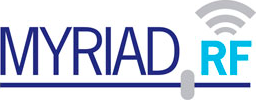Hi all,
In this thread I describe in detail the application I am working on. In summary, it’s possible that the FPGA packet size of 1020 samples may be increasing the latency too much for my application (an RFID reader), so I’m looking to reduce it in order to try and bring down the latency due to the packet having to be filled up before sending it down USB3.
It was suggested in the other thread by @IgnasJ that to reduce the FPGA packet size I would need to edit the FPGA gateware. However, this is going to be quite difficult for me to do, for a number of reasons (given below), principally my lack of experience and time…
I don’t suppose anyone has needed to modify the gateware to reduce the packet size (or the latency in general) already, or could produce a set of gateware which I could use, if it’s a relatively simple change for someone who knows what they’re doing?
I really hate to ask for other people to do things for me as I enjoy learning and understanding things, but in this circumstance there are the following reasons:
- I have no prior experience with FPGAs
- I am restricted with the time I can spend. I am a final year university student (implementing an RFID reader with the LimeSDR is my final year project), so unfortunately the demands of the rest of my course and the fact that this project is assessed mean that it’s quite risky (for my grade) to devote a lot of time learning about FPGAs, and the Lime gateware specifically, to try something which may not fix my issue anyway.
- Even if I did try to fiddle with the gateware, I’m worried about bricking the Lime by putting gateware which doesn’t work on the FPGA, especially given that I’d be fiddling with stuff which affects USB transfers. Perhaps this isn’t a valid concern - is it always possible to overwrite the existing gateware with a new, working version, regardless of what the current gateware is?
If it’s any incentive, the research group I am working with might be tempted to buy a few more LimeSDRs if I’m able to get the RFID reader working with the Lime, as it has a few properties which might make it quite a good RFID reader if this latency issue can be resolved.
Alternatively, if someone could at least point me in the right direction in terms of where I need to be looking to modify the FPGA packet size, that would also be really helpful!
Thanks and regards,
DasSidG
